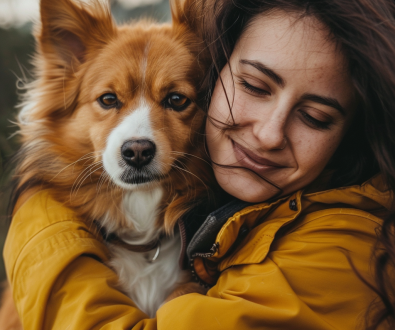Training Your New Dog: Building a Bond Through Education
Welcoming a new dog into your home is an exciting and rewarding experience, but it also comes with the responsibility of training. Training not only helps your dog become a well-behaved member of the family but also strengthens the bond between you and your canine companion. In this article, we’ll explore the importance of training and provide practical tips for building a strong bond with your new dog through education.
1. Establishing Trust and Communication
Training provides an opportunity to establish trust and clear communication between you and your dog. By setting consistent rules and expectations, you create a framework for your dog to understand what is expected of them.
- Positive Reinforcement: Use rewards such as treats, praise, and toys to reinforce desired behaviors. This positive approach builds trust and strengthens the bond between you and your dog.
- Clear Commands: Use clear, consistent commands to communicate with your dog. Start with basic commands such as sit, stay, and come, and gradually introduce more advanced commands as your dog progresses.
2. Strengthening the Bond
Training sessions offer valuable one-on-one time with your dog, deepening your connection and strengthening the bond between you. These shared experiences create positive associations and build mutual trust and respect.
- Quality Time: Use training sessions as an opportunity to bond with your dog and strengthen your relationship. Keep the atmosphere relaxed and enjoyable, and always end on a positive note.
- Patience and Persistence: Training takes time and patience, so be patient with your dog and celebrate small victories along the way. Consistency and repetition are key to success.
3. Promoting Mental Stimulation
Training provides mental stimulation for your dog, keeping their mind engaged and preventing boredom. Mental exercise is just as important as physical exercise for your dog’s overall well-being.
- Problem-Solving Skills: Training challenges your dog to problem-solve and learn new skills, keeping their mind sharp and active.
- Bonding Through Learning: The process of learning together fosters a sense of teamwork and camaraderie between you and your dog. Enjoy the journey of discovery and growth together.
4. Building Confidence and Independence
Training helps build your dog’s confidence and independence, empowering them to navigate the world with ease. As your dog learns new skills and behaviors, they gain confidence in their abilities and become more self-assured.
- Gradual Progression: Break training tasks into manageable steps, gradually increasing the difficulty as your dog becomes more confident and proficient.
- Positive Reinforcement: Celebrate your dog’s successes and offer plenty of praise and rewards to boost their confidence and motivation.
5. Enhancing Safety and Control
Training provides essential safety skills that can protect your dog from harm and ensure their well-being. By teaching commands such as recall and leave it, you empower your dog to make safe choices in various situations.
- Recall: Teach your dog to come when called, providing them with a reliable way to return to you, especially in potentially dangerous situations.
- Leave It: Teach your dog to leave items alone or disengage from unwanted behaviors, helping to prevent accidents and conflicts.
Training your new dog is not just about teaching obedience; it’s about building a strong bond based on trust, communication, and mutual respect. By investing time and effort into training, you lay the foundation for a lifelong partnership filled with love, companionship, and shared adventures. Embrace the journey of learning and growth together, and enjoy the many rewards that come from building a bond through education.





